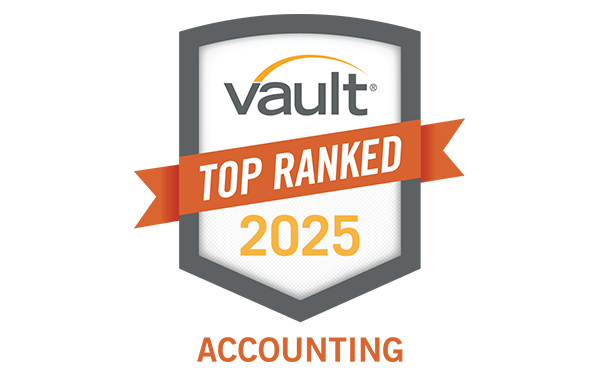The Inflation Reduction Act of 2022 introduced changes in clean energy tax credits, particularly impacting tax-exempt organizations. The legislation allows these organizations, traditionally outside the purview of such incentives due to their non-taxable status, to benefit from the Act’s provisions. Specifically, it focuses on the eligibility for claiming electric vehicle (EV) credits, even without income tax liabilities, via the Act’s elective pay provision (known as direct pay).
The details below outline the criteria for the qualified commercial clean vehicle credit, detailing requirements for vehicle acquisition and usage, and specifying the credit amounts. We also explore additional tax incentives available under the Act, providing a clear guide for tax-exempt entities looking to navigate these new opportunities in clean energy investment. This information is crucial for organizations seeking to understand and maximize the benefits offered by the Act in the realm of sustainable transportation and energy practices.
Credit for Qualified Commercial Clean Vehicles
EV Credits – General Requirements
For qualifying vehicles placed in service after Dec. 31, 2022, and before Dec. 31, 2032, a business or a tax-exempt entity may be eligible for the qualified commercial clean vehicle credit if:
- The vehicle is acquired for use or lease by the organization and not acquired for resale.
- The vehicle is subject to an allowance for depreciation, meaning the vehicle is used for business purposes of the organization and is not for personal use.
- The vehicle is made by a qualified manufacturer, as listed here.
- The vehicle is treated as a motor vehicle for purposes of Title II of the Clean Air Act and is manufactured primarily for use on public streets and highways.
- The vehicle is propelled to a significant extent by an electric motor which draws electricity from a battery that has a capacity of not less than 15 kilowatt hours (or, in the case of a vehicle that has a gross vehicle weight rating (GVWR) of less than 14,000 pounds, 7 kilowatt hours) and is capable of being recharged from an external source of electricity, or satisfies requirements for being a new qualified fuel cell motor vehicle.
A credit may not be claimed for any vehicle if a credit was previously allowed for the vehicle (only one credit per vehicle VIN).
Amount of Credit
The amount of the qualified commercial clean vehicle credit is:
- 30% of the vehicle’s tax basis, if the vehicle is not powered by a gasoline or diesel internal combustion engine, or
- 15% of the vehicle’s tax basis in the case of “hybrid” EV vehicles
The credit is limited to $7,500 if the vehicle has a gross vehicle weight rating (GVWR) of less than 14,000 pounds, and $40,000 for all other vehicles.
Claiming the Credit
The credit is generally claimed by filing Form 3800, General Business Credit, along with Form 8936-A, Qualified Commercial Clean Vehicle Credit. For an exempt organization, Form 3800 is filed with Form 990-T. By default, the credit is nonrefundable, so a tax-exempt organization would not receive a refund of any credit exceeding their tax liability on Form 990-T. However, tax-exempt organizations can take advantage of the elective pay option, also known as direct pay. A tax-exempt organization electing the direct pay option will be treated as if the organization made an income tax payment equal to the credit. That income tax payment can then be refunded after offsetting any unrelated business income tax. There is no requirement that an exempt organization has unrelated business income to elect the direct pay option. Additionally, tax-exempt entities do not have to use the credit qualifying property in an unrelated trade or business.
To elect the Direct Pay option, tax-exempt organizations will be required to complete an initial pre-filing registration with the Treasury Department. Once the registration is completed and approved, tax-exempt organizations will be able to apply the credits as tax payments on Form 990-T and receive a refund of those tax payments. The elective pay (Direct Pay) method can not be used unless an organization first completes the pre-filing registration. The pre-filing registration process is not yet available, but Treasury and the IRS will provide more information about the pre-registration process later this year.
A third option for monetizing the credits is transferring the credits. Tax-exempt organizations may elect to transfer part or full credit to unrelated taxpayers rather than using the credit against 990-T liabilities. Any amount of consideration paid by the transferee taxpayer for the transfer of such credit (or such portion thereof) is (1) required to be paid in cash, (2) not included in gross income, and (3) not allowed as a deduction to the transferee taxpayer.
Other Common Tax Credits Available to Tax-Exempt Organizations
Clean Energy Investment Credit
The Clean Energy Investment Credit provides tax incentives for investing in property to reduce greenhouse gas emissions and utility costs. Qualified energy property includes solar property, wind energy property, energy storage property, microgrid controller property, geothermal property, combined heat and power systems, and interconnection property. Eligible property must be placed in service after Dec. 31, 2022, and its construction must begin before Jan. 1, 2025. The credit equals 6% of the property’s basis but increases to 30% if prevailing wage and apprenticeship requirements are met. There are additional credit increases available for domestic content, energy communities, and the low-income communities bonus credit program.
Alternative Fuel Refueling Property Credit
The Alternative Fuel Refueling Property Credit provides tax incentives for EV charging stations. For property installed after Dec. 31, 2022, the base credit of such qualifying property is 6%. However, if certain prevailing wage and apprenticeship requirements are met during the construction of such property, the credit increases to 30%. The credit is capped at $100,000 per item of qualifying property and property must be installed in a low-income or rural census tract.
Article Prepared By:
Justin W. Herring, CPA, MST | Tax Manager




